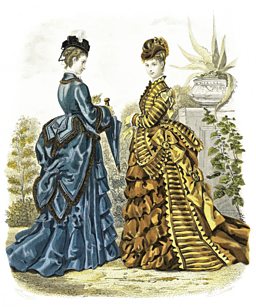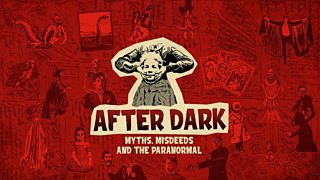The Tudor lesbian love story you need to know this Pride
Meet Mayken and Magdaleene, and discover their untold queer history in this fascinating episode of Betwixt The Sheets
By Roxy Bourdillon
Picture the scene: two women are frolicking on a farm in 17th century Bruges. Mayken and Magdaleene are having a gloriously gay time, larking in the pond. Basking together in the hot sunshine, they kiss and fondle in the open air. They are not exactly being subtle about their sapphic shenanigans.
This captivating vignette is the perfect starting point for an eye-opening edition of Betwixt The Sheets: The History Of Sex, Scandal and Society. In this juicy episode, the spotlight is shone on the not-talked-about-enough Tudor lesbians. Intrigued? You should be. Our effervescent and extremely knowledgeable host Dr. Kate Lister is joined by the brilliant Jonas Roelens, a historian specialising in sexuality in the early modern period. Kate and Jonas reveal the riveting, real life story of Mayken and Magdaleene.
Welcome to “the capital of sodomy”
Kate and Jonas transport us back in time to 1600s Bruges, then called the “Southern Low Countries”. Its nickname? “The capital of sodomy.” As Kate quips, “I don’t think they use that in the tourist advertisements!” She explains that the term “sodomy” originally described any sex act apart from a married man and woman having sex to make babies, commenting, “All of the fun stuff then, I guess!”
In the Southern Low Countries sodomy was a societal taboo and a capital offence. The punishment was severe: being burnt at the stake. Historically, the vast majority of people convicted for sodomy were men. In an overwhelmingly phallocentric society, many simply did not believe that lesbian sex was possible. However, in the Tudor period in this particular region, there was a sudden spike in the persecution of “female sodomites”. Two of them were our friends, Mayken and Magdaleene.
Why were so many more women being tried?
In his research, Jonas has found 25 cases of women being tried as sodomites during the Medieval period, and then also Mayken and Magdaleene in the seventeenth century.
Jonas theorises that “female sodomites” might have been penalised more frequently, because women in the Southern Low Countries at the time had “a huge amount of agency”. From the right to attend school and pursue careers to travelling around the country without male guardians, they were remarkably independent. But there was a drawback to all that freedom. “If you’re fully participating in society, then your crimes are also fully being held accountable.”
Lesbian lovers on the run
Mayken and Magdaleene fled when one of their husbands threatened to hand them over to the authorities, but were arrested in 1618. During the trial, they were incredibly self-assured about their queer desires, despite the fact that queer sex was seen as a sin and punishable by death. They boldly stated that they preferred having sex with women. Magdaleene boasted about being a gifted lover, claiming that other women were begging her to sleep with them.
The aldermen were, as Jonas puts it, “flabbergasted”. Some assumed that Magdalene must be intersex. “Others even believe that she is the devil in disguise, or that she had made a pact with the demon to receive a penis from him.” Near the end of the trial, the aldermen demanded to know if Magdaleene was a witch. “It's being linked with other types of crimes – religious crimes, heresy, witchcraft – which illustrates how difficult people found it to make sense of twowomen having sex with each other.” Mayken and Magdaleene were flogged and banished for eternity.
So what can we learn from queer history about LGBTQIA+ rights now?
Jonas reflects, “Looking at these historical figures it became clear to me that history isn’t a line of continual evolution for the better.” He talks about present-day society, which he describes as “a polarised situation with economical threats, climate change, warfare”. He argues that whenever there is social, political or economic upheaval, people search for a scapegoat. Often that scapegoat is the LGBTQIA+ community. “This is true for Late Medieval Bruges but it’s also true for our present-day society.”
Jonas concludes with a thought-provoking message for Pride and all year round: “We need to be aware of these rights of these things that we have accomplished and we shouldn’t take them for granted.”

More from the ÃÛÑ¿´«Ã½!
-
![]()
Criminally Queer: The Bolton 7
Hugh Sheehan examines a landmark case that transformed seven Bolton men's lives and advanced gay rights.
-
![]()
After Dark: Myths, Misdeeds & the Paranormal
The podcast that unpicks history’s spookiest, strangest, and most sinister stories.
-
![]()
Getting Better with Jonathan Van Ness
Join Jonathan Van Ness (Queer Eye) each week for their next exciting endeavour!
-
![]()
Short History Of...
Witness history's most incredible moments and remarkable people.





